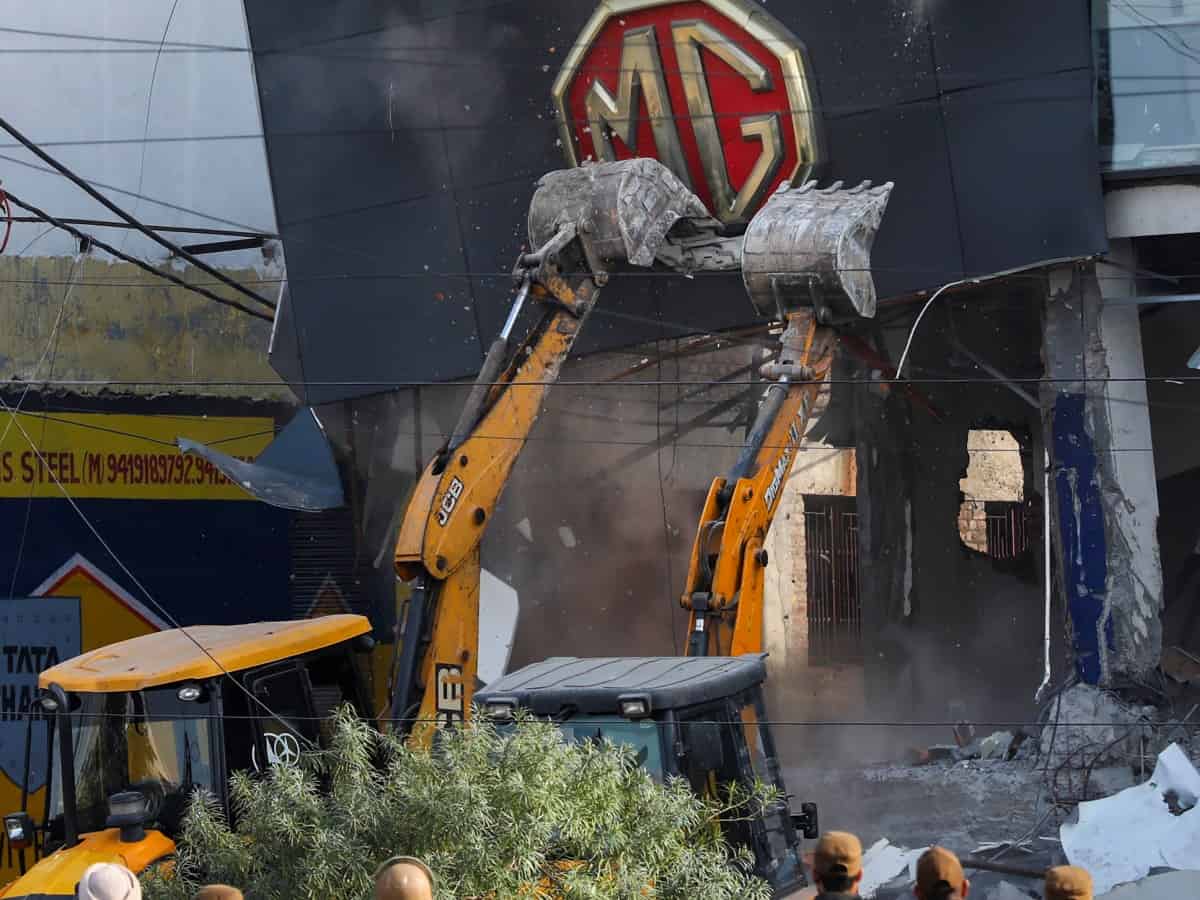
For the first time since the abrogation of Article 370 in August 2019, Kashmir has started witnessing protests against the anti-encroachment drive in which bulldozer has become a symbol of state power.
The anti-encroachment drive in J&K was announced by the Union Territory administration to get the land vacated under the illegal occupation of the people in the past over three decades when armed militancy reigned supreme and the rule of law had taken a hit. The administration attributed the drive as compliance of an order of the High Court, in which the government was directed to retrieve the land from occupation of the people who had occupied the state land, which was acquired by encroachers as part of their power and influence, as beneficiaries of various schemes, particularly “ Roshini”. These schemes also benefited the small landholders, who had built their homes and shops to shelter themselves and to earn their livelihood.
Anything happening in Jammu and Kashmir has wider ramifications than what happens in other states or union territories. These drives assume greater political, demographic and class dimensions as the vast majority of people in Kashmir see it against the backdrop of the “snatching of their rights and privileges” under the special status which was granted to them under Article 370 and Article 35 A of the Indian constitution.
Article 370, though hollowed out over the decades, had its symbolic value in the separate constitution, flag, and the most powerful legislature in the country which had the powers to facilitate or stall central laws, and also make its owns laws. Article 35-A granted inalienable rights to the people of the state to the land and jobs, which was more critical to them than the symbols which differentiated the state from the rest of the country.
The anti-encroachment drive, in which bulldozers were extensively used to raze what the government called illegal structures on the illegally acquired land, were directed in the Valley, which is inherently Muslim-majority. In the Jammu region too, the bulldozers moved against the occupants belonging to the community. In comparison, there were very few structures were demolished in Jammu, belonging to other communities. That gave credence to the charge levelled by Kashmir’s political leaders, including Mehbooba Mufti and Omar Abdullah, two former chief ministers. Mehbooba said that “majority was being turned into minority and minority into majority.” Omar described it as an “ imbalanced exercise”, implying that Muslims were being targeted more than other communities.
After the anger swelled, the authorities came out with the verbal assurance that the small landholders will not be touched, and also stated that only the powerful politicians, influential people, including former and serving bureaucrats involved in occupation of the land would be at the receiving end. This created a perception of class. But the poor too started receiving eviction notices. And the poor realised that things were not in their favour unless or until a formal order is issued. That order is awaited till date.
J&K BJP chief Ravinder Raina, thundered in the Nai Basti area, a Hindu enclave in Jammu, where scores of shopkeepers and home owners were served eviction notices. He declared “I will face the bulldozers before it comes to you.” This was in contrast to the attitude of the party to the eviction notices served in Bhatindi, Sunjawan and narwal areas, the Muslim majority enclaves.
Today, that is Wednesday, several areas in Srinagar, witnessed the closure of shops and business establishments after almost three and a half years. This punctured the narrative that the “ hartal” culture is over to some extent. The anger is swelling and unless the government brings out a clear cut policy, this anti-encroachment drive will touch communal and political fault lines. The dangers are clear and palpable.
